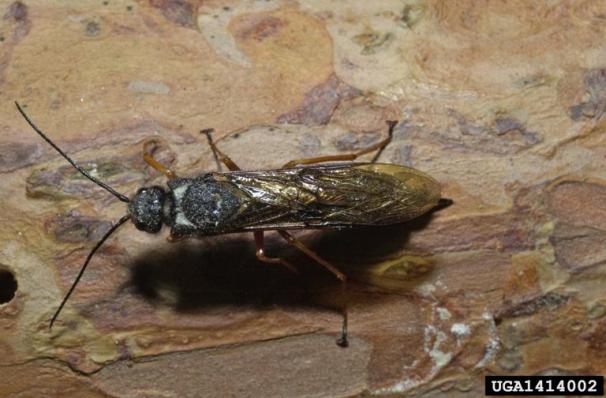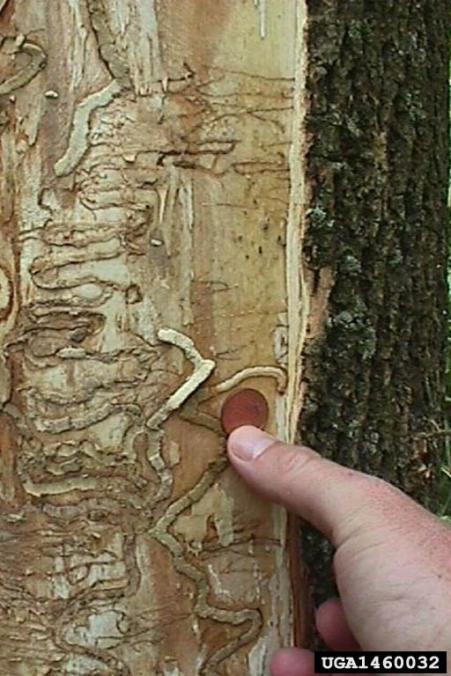Sirex Woodwasp

About the Sirex Woodwasp
Woodwasps (or horntails) are large, robust insects, usually 1.0 to 1.5 inches long. Adults have a spear-shaped plate (cornus) at the tail end; in addition, females have a long ovipositor under this plate. Larvae are creamy white, legless, and have a distinctive dark spine at the rear of the abdomen. More than a dozen species of native horntails occur in North America.
Key characteristics of the sirex woodwasp include:
- Body dark metallic blue or black
- Abdomen of males black at base and tail end with middle segments orange
- Legs reddish-yellow
- Feet (tarsi) black
- Males with black hind legs
- Antennae entirely black
How Sirex Woodwasp is Transported
Sirex woodwasp has been the most common species of exotic woodwasp detected at United States ports-of-entry associated with solid wood packing materials. Recent detections of sirex woodwasp outside of port areas in the United States have raised concerns because this insect has the potential to cause significant mortality of pines. Awareness of the symptoms and signs of a sirex woodwasp infestation increases the chance of early detection, and thus, the rapid response needed to contain and manage this exotic forest pest.

Damage Caused by Sirex Woodwasp
Sirex woodwasp can attack living pines, while native woodwasps attack only dead and dying trees. At low populations, sirex woodwasp selects suppressed, stressed, and injured trees for egg laying. The foliage of infested trees initially wilts, and then changes color from dark green to light green, to yellow, and finally to red, during the 3-6 months following the attack. Infested trees may have resin beads or dribbles at the egg-laying sites, which are more common at the mid-bole level. Larval galleries are tightly packed with very fine sawdust. As adults emerge, they chew round exit holes that vary from 1/8 to 3/8 inch in diameter.
How to Control Sirex Woodwasp
Sirex woodwasp has been successfully managed using biological control agents. The key agent is a parasitic nematode, Deladenus siricidicola, which infects sirex woodwasp larvae, and ultimately sterilizes the adult females. These infected females emerge and lay infertile eggs that are filled with nematodes, which sustain and spread the nematode population. The nematodes effectively regulate the woodwasp population below damaging levels.
If you would like more information about sirex woodwasp, please contact your local MFC forester.
